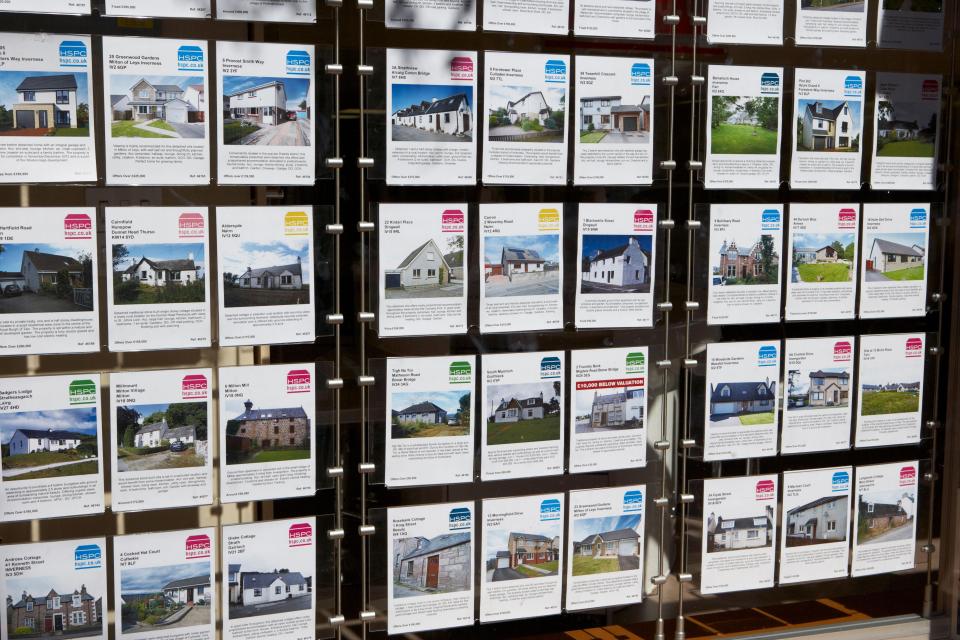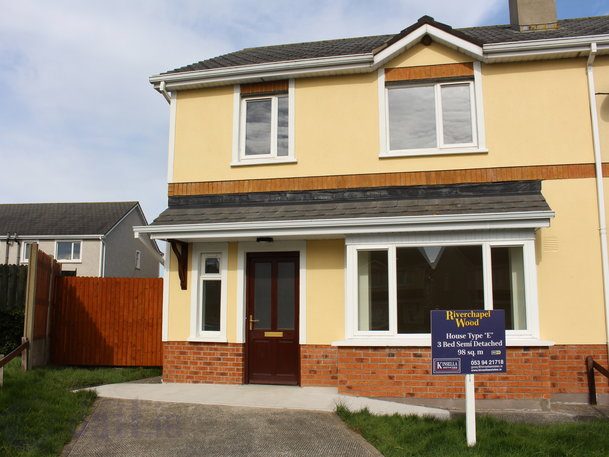House Prices in the South East Continue to Rally
 The latest round of Irish residential property price changes has just issued from the Central Statistics Office, or CSO, and the trend from the last few months continues. While average prices nationally are up 11.6% year on year, prices outside of Dublin are growing at a faster rate than they are around the capital. The breakdown is as follows: property prices throughout the rest of Ireland (i.e. not including Dublin) were 11.8% higher in the 12 months to June, with the increase for Dublin 11.1%. This puts annual inflation at 11.6%, which is the fastest pace in two years.
The latest round of Irish residential property price changes has just issued from the Central Statistics Office, or CSO, and the trend from the last few months continues. While average prices nationally are up 11.6% year on year, prices outside of Dublin are growing at a faster rate than they are around the capital. The breakdown is as follows: property prices throughout the rest of Ireland (i.e. not including Dublin) were 11.8% higher in the 12 months to June, with the increase for Dublin 11.1%. This puts annual inflation at 11.6%, which is the fastest pace in two years.
When we look further into those average figures, it appears that the South East region (including Wicklow and Wexford) showed the greatest house price growth with an increase of 16.7% – almost double that of the Mid West and significantly above Dublin rises.
In terms of recovery, prices in the South East region have increased in excess of 50% since the recovery began in 2012/2013; however, they remain approximately 35% below peak/2007 prices. RTE and Irish Times commentary on current Irish house price inflation attributes the pick-up to “the robust economic recovery”, increased mortgage lending, relaxation of the Central Bank deposit rules for home buyers and the Help-to-Buy (HTB) scheme – which, incidentally is under review and in threat of being axed.
If all this talk about rising house prices locally has made you think about selling, you might be interested in the following article: How to Know When it’s the Right Time to Sell
If you are considering selling in the South Wicklow and North Wexford areas, call into one of our offices (located in Carnew and Gorey) and chat to any of our expert team or you can contact us online at kinsellaestates.ie. We are happy to facilitate overseas buyers and sellers via Skype or similar, outside of regular office hours.
Alternatively, email me directly on michael@kinsellaestates.ie or telephone : +353 53 94 21718
Tips for summertime property sellers
Don’t you just love when summer arrives right at the moment it’s due?
It’s certainly a rarity in Ireland – although here in Ireland’s sunny South East we can boast the most hours of sunshine per year compared with any other part of the country. That is probably why sales transactions soar in summertime. In fact, in last weekend’s Sunday Business Post newspaper, a report on commuter counties placed both Wicklow and Wexford high on the list of buyers’ destinations, with recorded increases of 17% and 13% respectively. Carlow, Kilkenny and Waterford have all seen reductions in demand over the last 12 months. This makes for an interesting time in South Wicklow and Wexford county right now as demand increases by supply has yet to catch up. House-hunters, especially those looking for family homes will need to widen their search areas/criteria and be prepared to engage in competitive bidding.
The real opportunity exists for sellers of second-hand homes and those thinking about bringing a residential property to the market over the next few weeks and months.
For existing sellers who are waiting for the right buyer to come along, it might be worth going through the tips below and freshening up their homes and perhaps update the property listing and photos online.
Tips for summertime property sellers:
- The notion of ‘kerb appeal’ is a cliché but that doesn’t make it any less relevant. The initial impression that your home creates as a potential buyer pulls up is difficult to change so it’s important that the impression is the best one possible. This applies to the photos that appear online also. They should be clear, bright and clear of clutter.
- As a rural estate agency, we understand the importance of giving good, clear directions to your home. Eircode has not been hugely successful but marking properties on a digital map makes it easy for house-hunters to use GPS when arriving for a first viewing. That’s our job. As the seller, it’s your job to ensure that if your property has a house name or number, that it is clearly marked. If would-be buyers get lost trying to find your property, by the time they arrive, late, they will be too stressed and frustrated to fully appreciate the presentation of your home.
- The front door should be thoroughly cleaned or freshly painted and clear of dust and cobwebs. Choose the colour well, be sure to reflect the tone of your home for example, yellow for youthfulness, blue for calm and red for a warm welcome! If possible, the entire front of the house should be freshened up but we understand that this is not always possible.
- Following on from the point above, if resources are limited, allocate them wisely; concentrate on the areas that will have the most impact. For example, wash the windows and scrub or repaint window frames.
- Tidy the front garden, sweep pathways, trim hedges and pull weeds. If flowers are not an option, invest in a few well thought out planters to add colour and to create an abundant feel. Put wheelie bins away, out of sight if possible.
- Treat your entrance like a room of its own with a good design, clutter-free, and with some light furnishing or focal piece – like a hall table with flowers (and nothing else!).
- Once inside, continue the fresh, clutter-free theme and remove unnecessary, bulky furnishings. In fact, this might be the right time to start preparing for your impending move.
Here at Kinsella Estates, we offer a free sales appraisal and with this, we offer key suggestions about how to best present your property to suit the type of buyer your home is likely to attract. Contact us directly to discuss your home and to arrange an appraisal.
For specific queries or to speak with a local property expert about your buying and selling needs in Wexford, Wicklow and surrounding areas, contact Michael, Alan or Eileen Kinsella at kinsellaestates.ie .
Email me directly on michael@kinsellaestates.ie or telephone : +353 53 94 21718
Less than half the population are ‘content’ with their housing

It’s that time of the quarter again, lots of property news, results and price reports. Daft.ie and MyHome.ie are showing average property price increases of almost 10% nationwide. While the average increase is lower across County Wicklow, this is likely due to fewer transactions and those transactions are coming from an already-high value base. County Wexford is picking up speed and this has been one of the busiest quarters that we have seen in years. In general, house prices are up 40% since the bottom of the market – which is great news for sellers and home owners whose property might be in negative equity but not so good for house hunters.
Added to the usual run of house price news, KBC Bank have published their Homebuyer Sentiment survey. These type of survey is few and far between as ‘sentiment’ is more difficult to measure than percentages or euro, but the findings are usually more interesting. And this one doesn’t disappoint. Key findings include the following:
- Only 49% of Irish consumers are content with their current housing
- 23% are not in a position to purchase despite wanting to
- 28% are considering buying within the next two years, with half of these actively house hunting
- Of those currently ready to buy, less than a quarter are investors while the remaining buyers are an equal mix of first-time buyers and those trading up or down
The phrase ‘pent-up demand’ has been thrown around since the confusing days of 2011/2012 and the effects of this have been felt in the market for a few years. Usually we think in terms of people who are either looking to buy or to sell; this survey includes homeowners who are trapped in unsuitable and inappropriate housing.
Interestingly, the survey estimates (based upon their random sampling) that there are approximately 70,000 would-be buyers ready to hit the market, with a total anticipated demand of 300,000over the next two years. While we have sufficient zoned land in parts of County Wexford to deal with short-term future development, the same cannot be said for most of County Wicklow.
All of this activity and these findings are reinforcing the trend for home buyers to look further from the Capital as they search for their future home. Improved road infrastructure right through Wicklow from the M50 to Gorey, just over the Wexford border, makes a 45 minute commute possible from smaller towns like Carnew, Shillelagh and Tinahely. For people looking for a coastal home, Riverchapel, just outside the seaside town of Courtown, will be an increasingly attractive location.
To view a selection of the properties currently available, visit kinsellaestates.ie
For specific queries or to speak with a local property expert about your buying and selling needs in Wexford, Wicklow and surrounding areas, contact Michael, Alan or Eileen Kinsella at kinsellaestates.ie . Alternatively, you can email me directly on michael@kinsellaestates.ie or telephone : +353 53 94 21718 to arrange any viewings.
Wicklow/Wexford Property Outlook for 2017
As recovery rolls out across the South East, we look at how the local market performed last year and what we can expect in 2017.

Last year saw the appointment of our new Housing Minister, Simon Coveney and his ambitious plan: ReBuilding Ireland. The unveiling and widespread acceptance of this plan was probably the highlight of the property year – along with a relaxing of the Central Bank mortgage deposit rules – but there were many, many lows. Without doubt, chronic lack of supply remains the critical issue and this is seen in the rising rental prices, record homelessness and a seeming stalemate within the developer community meaning that new supply remains well below demand for the third consecutive year. In particular, demand for housing in the capital increased by 10% while supply increased by a mere 1%.
Rentals prices increased nationwide by an average of 12% but Dublin and Cork saw increases of double that in key areas. An eleventh hour bill put forward by Minister Coveney – despite opposition from partners in government – aims to slow the rate of increase for the next three years to start with. Rent caps of 4% per year introduced for the Dublin area are likely to spread to other urban areas over the next few months, north Wicklow will be first in line for that but south Wicklow and Wexford are not expected to face rental caps this year (unless universal application, as called for by Fine Fail, makes its way into legislation).
As for the first time buyers’ help-to-buy tax rebate scheme, whether this is a high point or a low point, really depends upon who you listen to. The practical reality is that this initiative will only apply to a tiny proportion of buyers in today’s market. If the government really wanted to impact the market, they would not have taken such a scenic route to avoid the perception of helping the developers. The truth is that encouraging developers is exactly what is needed to get new housing units delivered as quickly as possible. This is something that the Minister has talked about and he has pledged to address the issue of building costs in the early part of 2017. One effective way to do this might be to help bring down building costs by reducing the VAT rate, even temporarily, as we saw in the hospitality sector. Unless building becomes commercially viable for developers and construction companies, there is no reason for them to take the risk.
But this needs to change.
From 2015 to the end of last year, the number of property purchases in Wicklow decreased from 1,402 to 1,271, mainly due to lack of supply rather than lack of demand, as evidenced by the price increases locally. A similar situation was seen in County Wexford where – despite price increases – the volume of transactions were down year-on-year from 1,663 to 1,471.
With the population in a state of increase, employment continuing its upwards trajectory and mortgage funding in more plentiful supply than we have seen over the past eight years, demand is surging. But without new housing, there is no way to service this demand. Until new supply hits the market, prices will increase as competing buyers pay a ‘scarcity premium’ for any available homes in the right areas.
At the moment, for buyers, there are currently fewer than 700 available properties in County Wicklow and just shy of 1,100 available in County Wexford, that’s between six to nine months worth of supply. New homes are needed to bridge the gap between supply and demand as a matter of urgency.
Click here to view all of our new and second-hand homes in Counties Wicklow and Wexford.
For specific queries or to speak with a local property expert about your buying and selling needs in Wexford, Wicklow and surrounding areas, contact Michael, Alan or Eileen Kinsella at kinsellaestates.ie . Alternatively, you can email me directly on michael@kinsellaestates.ie or telephone : +353 53 94 21718 to arrange a viewing.
Riverchapel Wood: Final house available in current phase
Last chance to buy in the current phase
With the supply of new homes running low across the South East, it won’t surprise local house-hunters to see that only one house remains available in the current phase of Riverchapel Wood.
6 The Parade, Riverchapel Wood is situated within walking distance of the scenic Courtown Harbour and many leisure attractions. This developement has proven popular with both homebuyers and investors, with returns almost as attractive as the views!
Number 6 is a spacious three-bedroom semi-detached house in excellent condition throughout, with a bay window and double doors leading onto the rear garden; Asking price €137,000.
For more details on the property, check out the listing on :- http://www.daft.ie/wexford/houses-for-sale/courtown/6-the-parade-riverchapel-wood-riverchapel-courtown-wexford-1354836/
For specific queries or to speak with a local property expert about your buying and selling needs in Wexford, Wicklow and surrounding areas, contact Michael, Alan or Eileen Kinsella at kinsellaestates.ie . Alternatively, you can email me directly on michael@kinsellaestates.ie or telephone : +353 53 94 21718 to arrange a viewing.
Helping buyers get their dream homes
Here at Kinsella Estates we love what we do and the best part of our day is when we hand new buyers the keys to their dream home!

“Thank you for all work in getting us the keys to our new home.
Michael was very professional and always went above and beyond for us always
The staff in the office were brilliant and always got back to us.
We would highly recommend Kinsella Estates to anyone buying a new or second home.”
Budget 2017 for Property Buyers and Sellers
Property Measures Announced in the Budget
We knew in advance of Budget ’17 that housing was going to be a priority so Michael Noonan’s budget speech contained very few surprises, if any, for the sector.
 In an earlier post, I detailed the Government’s Action Plan for Housing: Rebuilding Ireland. This plan sets out the housing problems to be tackled and steps that will be taken. While the issues are broken up into five categories or ‘pillars’ they all come back to one common underlying problem, that is, the chronic lack of supply across all housing sectors from social to private to rental. Developers and members of the construction industry have blamed the cost of building and budgetary measures were definitely needed to address this. Unfortunately, this is not what we got on Budget Day. Instead, we got a grant – by way of tax rebate – for first-time buyers purchasing newly built homes only.
In an earlier post, I detailed the Government’s Action Plan for Housing: Rebuilding Ireland. This plan sets out the housing problems to be tackled and steps that will be taken. While the issues are broken up into five categories or ‘pillars’ they all come back to one common underlying problem, that is, the chronic lack of supply across all housing sectors from social to private to rental. Developers and members of the construction industry have blamed the cost of building and budgetary measures were definitely needed to address this. Unfortunately, this is not what we got on Budget Day. Instead, we got a grant – by way of tax rebate – for first-time buyers purchasing newly built homes only.
This help-to-buy scheme for first-time buyers will give a rebate of income tax (already paid) of 5 per cent of the purchase value of a newly-built home, up to a value of €400,000. That translates to a maximum rebate of €20,000 in cash. Properties costing from €400,000 to €600,000 will qualify for the €20,000 rebate, but the scheme will not apply to homes over €600,000 in value. This is a temporary measure only, backdating to July 19th last and will run until the end of 2019. In practical terms, buyers of a new house costing €300,000 will qualify for a rebate worth €15,000, however, they will still need their €23,000 deposit (under the Central Bank rules) and they must have a combined income of €75,000.
While the rebate is designed to offset the cost of higher deposits required from first-time buyers, and in turn boost demand, it has been perceived by members of the sector as a grant to the developer. Irrespective of the designed purpose, in real terms, this is the least effective way to stimulate supply and is likely to simply increase prices for first-time buyers already struggling to afford their first home.
While the first-time buyer initiative has been deeply criticised across the industry, at least there was some attempt to address their concerns. Those stuck in rental situations were not so lucky. At best, the help-to-buy scheme will create get a small portion on renters out of this market and into their own homes, and this should free up some rented accommodation.
 Other Property Measures
Other Property Measures
- Residential investors/landlords received a 5 per cent increase in their mortgage interest relief, from 75 per cent to 80 per cent in 2017 and this is expected to increase annually until it reaches 100 per cent again.
- The Home Renovation Incentive Scheme was extended further by two years, bringing it up to the end of 2018.
- The Rent a Room scheme had its tax-free income ceiling here has increased by €2,000 annually to bring it up to €14,000.
For specific queries or to speak with a local property expert about your buying and selling needs in Wexford, Wicklow and surrounding areas, contact myself (Michael), Alan or Eileen Kinsella at kinsellaestates.ie or email me directly on michael@kinsellaestates.ie and telephone: +353 53 94 21718
The Structural Survey: Why it is important and what to expect
This week’s blog post is an extract of the Irish Property Buyers Handbook 2015, by Carol Tallon, dealing with the structural survey:
THE STRUCTURAL SURVEY
Why it is important and what to expect
The structural survey is a comprehensive inspection of the property in question, carried out by a qualified surveyor, registered architect or chartered engineer at the request of the potential home-buyer. It should not be confused with the lender’s survey, which in reality is merely an independent valuation report. The purpose of the structural survey is to give the purchaser an unbiased evaluation of the overall condition of a property, and to highlight any aspects that may need upgrading, repair, replacement or ongoing maintenance. Crucially, the report arising from the structural survey will provide the buyer with the information needed to make an informed decision on whether to go ahead with purchasing the property.
Unlike the bank survey, which is mandatory, a structural survey is optional, although any property professional would advise that the buyer undertake one before making the single, biggest investment of their life. Undertaking this due diligence and attaining the knowledge of defects or issues needing attention may discourage buyers from proceeding with the purchase outright, or may help to plan for work that is likely to be necessary in the short and medium term. Armed with this survey, the buyer should save a significant sum of money on defects that the seller may now have to correct before the sale is agreed. Knowing the cost of even small repairs, which can run to thousands of euro, can be a great negotiating tool. Aspects of the property that are routinely checked in the course of structural survey are as follows:
External Areas, Internal Areas, Other
- Roof and chimneys
- Guttering and flashing
- Settlement cracks
- Movement in foundations
- Windows and doors
- Drainage
- Boundaries
- Path and driveway
- Interior attic space
- Ceilings and floors
- Interior walls
- Windows and doors
- Heating system
- Plumbing and Electrics
- Working fireplaces
- Ventilation and damp
- Insulation
- Compliance with Building Regulations
- Boundary infringements
- Boundary conditions
There are some limitations to the survey, which may vary from one survey to another. Buyers will be made aware of these limitations by the surveyor, either in advance of the survey or within the report document. If there is any ambiguity, buyers are advised to seek clarification and not to assume anything. The most notable limitations tend to be as follows:
- Roofs and chimneys in excess of three metres generally will be examined from ground level.
- The building fabric will not be breached in the course of the inspection. The survey is strictly on the basis of what is visible or accessible.
- Plumbing and heating systems will be activated where connection permits, but will not generally be tested unless there is reason to suspect a problem.
- Sewers are inspected to the extent of lifting covers on manholes. Once again, testing will only be recommended where there is some reason to suspect something.
The age of the building to be surveyed is a very important consideration. Buyers should not be fooled by a modern, well-finished home. The age is no guarantee of a sound structure. In fact, many experts maintain that the overall quality of new home construction over the past decade has deteriorated somewhat. Older houses have their own particular issues to contend with – for example, non-regulation windows or access – but they are generally well-constructed. When looking at the structural condition of the property, the engineer will pay particular attention to defects that are inconsistent with the age of the property. The engineer will issue a full report to the buyer, which will set out areas of the property needing attention and make recommendations.
Defects or areas needing attention may cause a re-negotiation of the purchase price. In addition, defects that are inconsistent with the age of the house should flag concern. For example, if the engineer finds a hole in the roof of a modern, three bedroom semi-detached house, a question mark may arise over the quality of the property. On that point, some buyers in the past have chosen not to request a structural survey where the house in question is less than 10 years old and covered under the original structural defect insurance scheme, usually HomeBond. This is nonsense. Protection against defects for 10 years is of little benefit if the buyer cannot identify those defects.
It should be noted, however, that very few buildings are without any defects. The surveyor will furnish a lengthy report, many pages long, that will list observations, opinions and recommendations on issues that would not necessarily be classed as defects, so buyers should be prepared for this and not panic. When issues or possibly defects are identified, it does not necessarily mean that it is not a quality property. The buyer must work through the surveyor’s report and determine which issues are consistent and to be expected, which issues are easily remedied and which issues are essentially deal-breakers. Whatever the outcome, knowing in advance is essential – forewarned is always forearmed.
Engineers’ fees may vary, depending on the age and extent of the property, together with the location, or specifically, the time and travel involved. A survey generally will take between one to two hours. Buyers should expect to pay somewhere in the region of €300 to €450 plus VAT. If the buyer is waiting to sign contracts of sale, the engineer usually will give a verbal assessment of the property on the day of the survey – the equivalent to a thumbs up or thumbs down. The written report generally will issue within a period of five days. By engaging a suitably qualified surveyor with professional indemnity insurance, buyers are assured that they are covered in the event that they suffer financial loss as a result of neglect, error or omission in the course of producing the structural survey.
Snag List
A snag list will be necessary for buyers purchasing a newly-built home. It is not a structural survey, as discussed above, but rather a checklist of minor defects that the builder or developer must complete prior to the sale closing. The vast majority of newly-built properties are covered by a building guarantee or under a structural guarantee scheme, such as HomeBond or Premier, which protects the occupant of the home against specific significant defects for a period of 10 years. This protection applies to the property, not the owner; therefore, subsequent buyers will enjoy this protection for 10 years after the completion of the building.
The snag list consists of all the items that must be finished or fixed by the builder or developer before the sale is finalised. Builders have a poor reputation for after-sales service, so it is crucial that all outstanding items are dealt with before final monies are paid over. In certain circumstances, the sale might be allowed to proceed on the stated agreement of works to be carried out, but this leaves the buyer in a vulnerable position and is therefore not recommended. An exception to this might be the Irish weather causing huge delays in finishing the garden to specification. In this instance, the purchase might go ahead and close contracts subject to a small portion of the funds being withheld from the builder until such time as the garden works are completed.
As with the structural survey, a snag list is not mandatory, although it should definitely be regarded as essential by the new home-owners. Snag lists do not need to be carried out by a professional in order to be effective. In fact, some of the most comprehensive lists are carried out by the buyers, although engaging a professional engineer or surveyor has a number of benefits. Chiefly, their training and expertise suggests that they will uncover minor faults or needed finishing touches that the buyer might never have noticed. Secondly, they are likely to demand a higher quality finish than buyers might know to demand. Thirdly, buyers receive the benefit of professional indemnity insurance, as already discussed above. If any issue or defect is overlooked at the snagging stage, it may cost money to remedy it. By hiring a professional, that person is answerable to the buyer for any work carried out. Buyers who have some experience in construction or who have purchased property previously might feel confident about compiling a thorough snag list themselves. If so, there is now a wealth of information available through Irish and UK websites, where buyers can read tips, learn from other buyers and download comprehensive DIY snagging checklists. One good resource is www.snagging.org. If there is reason for concern, however, buyers should speak to a qualified engineer.
New Technologies
It is important to note, in the context of a survey or snaglist being prepared, that building, heating and electrical systems have become very complex with the introduction of renewable energy systems such as heat recovery units, ground source heat pumps and solar panel heating to name a few. It may be necessary to engage the services of a specialist to report on the conditions of such works in addition to the structural survey.
KEY POINTS FROM CHAPTER 17
- The structural survey is an inspection of the property in question, carried
out by a qualified surveyor for the potential home-buyer. - It is not to be confused with the lender’s survey, which is merely an independent valuation report.
- The purpose of the structural survey is to determine the condition of the property and to highlight any aspects that may need repair, replacement or ongoing maintenance.
- The structural survey will provide the buyer with the information needed to make an informed decision on whether to go ahead with purchasing the property.
- The buyer should be aware that older properties have inherent structural issues and these rarely will be considered deal-breakers. Buyers should be concerned about issues that are inconsistent with the age and price of the property.
- Further negotiations may take place to deal with issues arising from the report but only if they are inconsistent with the age and price of the property.
- A snag list consisting of all the items that must be finished or fixed by the builder or developer will be necessary for buyers purchasing a newly-built home.

